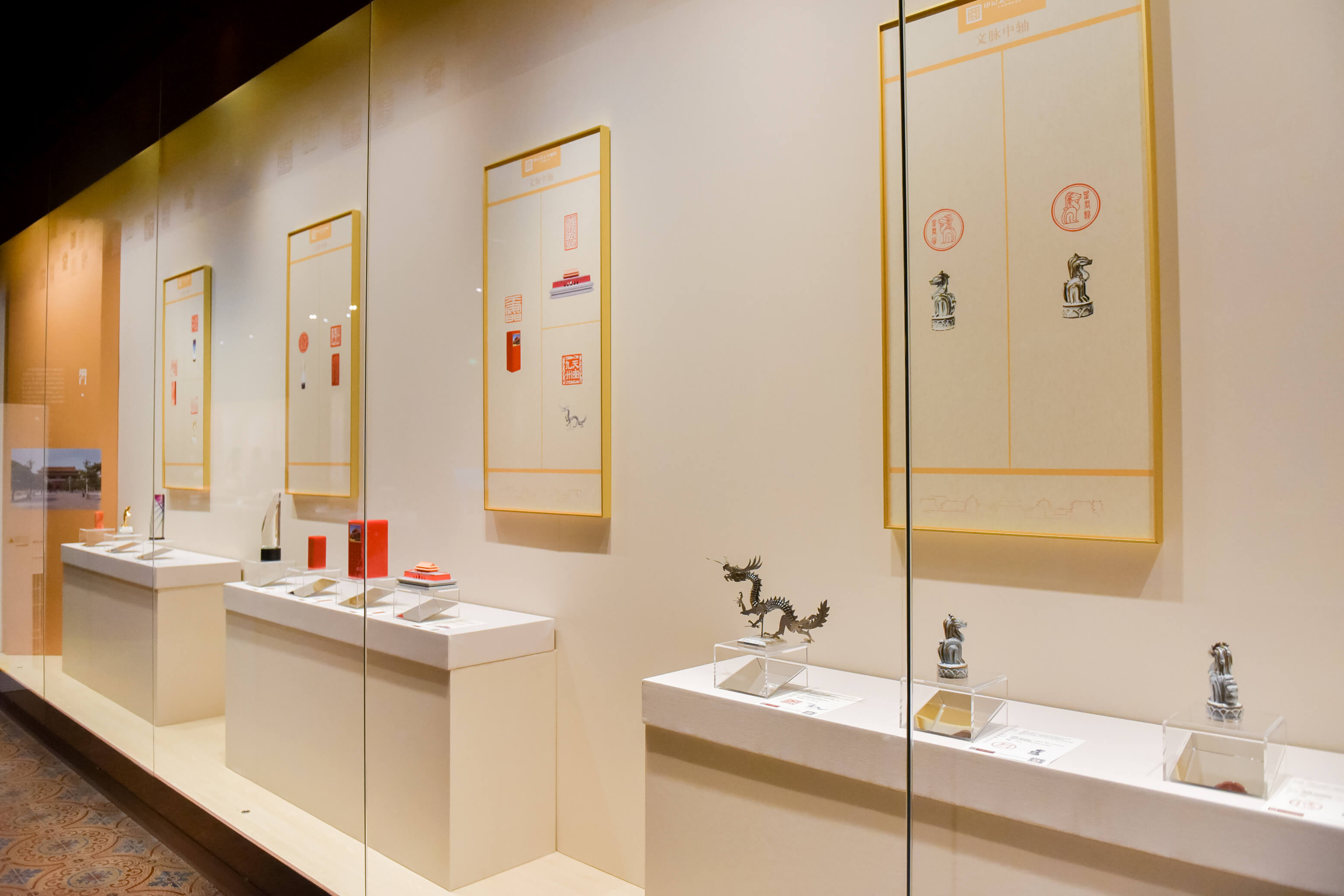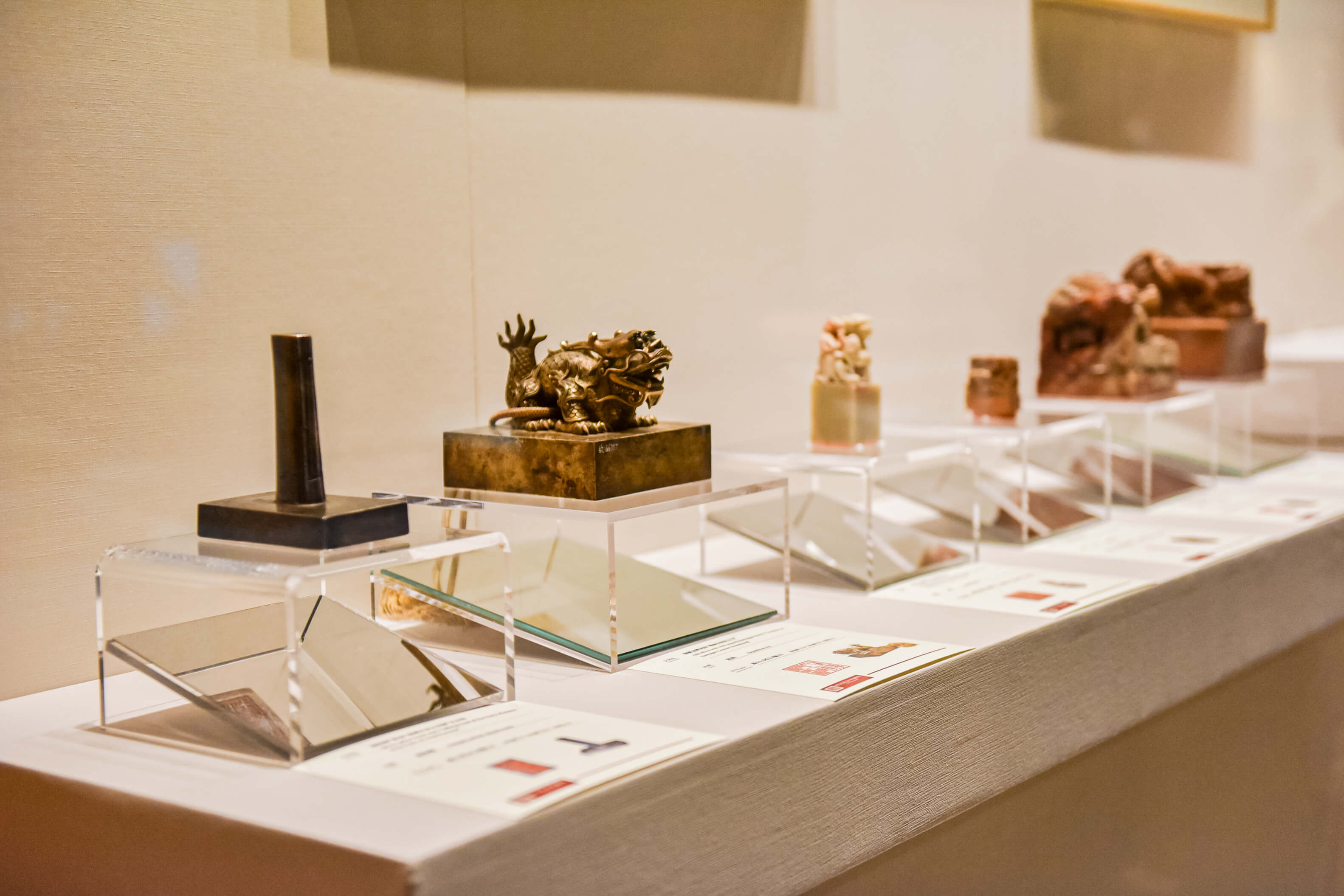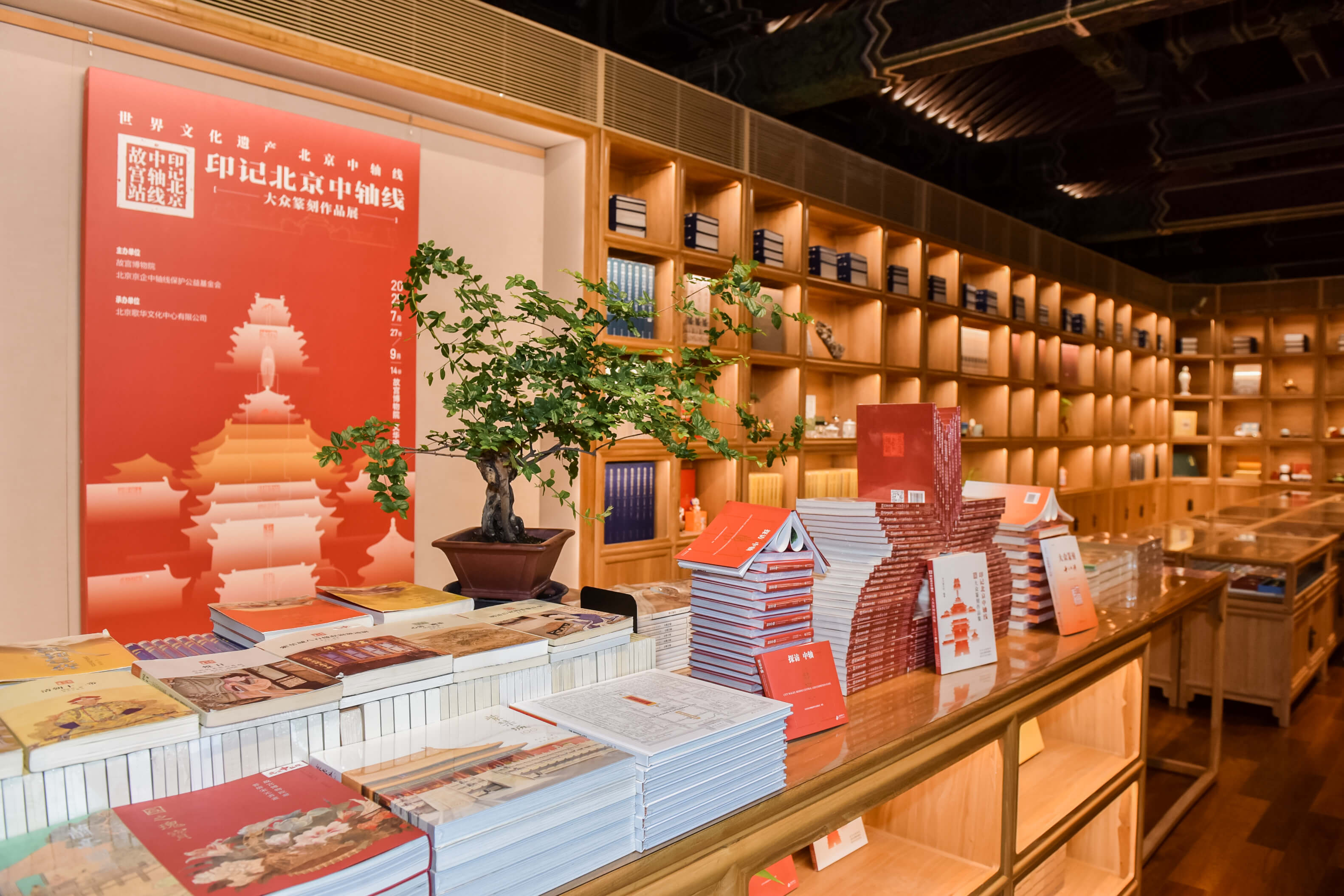To celebrate the first anniversary of the inscription of the Beijing Central Axis on the UNESCO World Heritage List, the exhibition “Imprints of a World Heritage Site: Beijing Central Axis in Seal Carving – Palace Museum Edition” opened on the afternoon of July 27, 2025, at the Palace Museum’s Hall of Literary Brilliance (Wenhua dian). Jointly organized by the Palace Museum, the Beijing Central Axis Protection Foundation, and Gehua Media Group, the exhibition highlights the cultural significance of the Beijing Central Axis, which has run through the heart of the ancient capital for over 700 years. Through a dialogue between imperial seal traditions and contemporary creations by ordinary citizens, the exhibition uses the compact form of seal carving to illustrate the historical depth and enduring vitality of the Beijing Central Axis.
Distinguished guests attending the opening ceremony included Wang Xudong, a member of the Party Leadership Group of the Ministry of Culture and Tourism and director of the Palace Museum; Du Haijiang, vice president and secretary of the CPC Leadership Group of the Palace Museum; Li Shouzhen, president of the Chinese Workers’ Association for Culture and Sports; Zhang Lixin, director of the Beijing Municipal Cultural Heritage Bureau; Mei Song, deputy chair and secretary general of the Beijing Central Axis Protection Foundation; Qi Yongqing, deputy Party secretary and chief legal advisor of Gehua Media Group; Luo Pengpeng, honorary director of the Seal Carving Institute at the Chinese National Academy of Arts; Rong Tie, former deputy director general of the Department of Culture of Xizang Autonomous Region, vice president of the Central Academy of Fine Arts of the China Democratic League, and a member of the Xiling Seal Engravers’ Society; and Li Danyang, art director at Gehua Media Group.
On July 27, 2024, UNESCO announced the inscription of the “Beijing Central Axis: A Building Ensemble Exhibiting the Ideal Order of the Chinese Capital” on its list at the 46th session of the UNESCO World Heritage Committee. General Secretary Xi Jinping gave important instructions, emphasizing the need to “preserve the country’s cultural and natural treasures and renew their glamour in the new era.” This exhibition is a direct response to that call. Inspired by the popular art of seal carving, the exhibition aims to promote the creative transformation and innovative development of fine traditional Chinese culture.
At the opening ceremony, Du Haijiang emphasized that the Palace Museum, as a key site on the Beijing Central Axis, bears the responsibility of preserving and promoting the traditional Chinese culture embodied within its walls. For this exhibition, the Museum has selected 20 imperial seals from its collection to be displayed alongside seal carvings created by the public, enabling a dialogue across centuries between tradition and innovation and showcasing the enduring vitality of Chinese civilization. “We hope visitors can feel the cultural pulse where the old meets the new through these works,” Du said.
In his remarks, Zhang Lixin noted that the inclusion of the Beijing Central Axis in the World Heritage List in 2024 underscores its significance as a symbol of Chinese civilization. “It is our duty to protect, inherit, and make good use of this cultural axis that embodies the wisdom and memory of the Chinese nation. This exhibition captures not only the tangible heritage of the Beijing Central Axis but also its enduring cultural connotation,” he said.
Luo Pengpeng highlighted the exhibition’s “people-centered” philosophy. Participants of the exhibition include professional seal carvers, students of all ages, and researchers, whose works reflect the public’s deep affection for the Beijing Central Axis. The chance to showcase their creations alongside imperial seals from the Palace Museum’s collection is also a testament to how cultural heritage protection in the new era is empowering cultural confidence and bringing people together through shared history and innovation.
The exhibition is divided into two main sections, featuring 200 public seal-carving works and 20 Qing dynasty (1644-1911) imperial seals, creating a cultural dialogue across time.
Public Seal Carving: A New Chapter for the Beijing Central Axis
More than 200 seals created by artists as well as ordinary people from all walks of life including students, teachers, and workers are displayed at this section. Using seal carving as a medium, these works connect the 15 key heritage sites along the Beijing Central Axis, from Yongding Gate to the Drum and Bell Towers. Combining traditional seal-carving techniques with modern materials such as glass microspheres, light-sensitive resin, and fiberglass, many of the works also incorporate AI design and 3D printing, demonstrating how this ancient art form continues to evolve with the times.

Palace Seals: Echoes of the Forbidden City
This section features 20 imperial seals from the Qing dynasty, selected from the Palace Museum’s collection. These include seals used in state affairs, seals for authentication of calligraphy and painting by emperors and empresses, and personal seals. Nearly half of these items were last shown to the public in 2008. The inscriptions and craftsmanship of these seals offer insight into the imperial culture and legacy of Chinese seal carving.

A 7.8-meter-long miniature model of the Beijing Central Axis distills the grandeur of the capital’s historical backbone into a compact form. A multimedia installation, “Time Capsule of the Beijing Central Axis,” allows visitors to explore the historical evolution of the Axis in an immersive manner. In a creative twist, the exhibition also features two sand paintings created by kindergarten teachers and students. With grains of sand, they render the impressive silhouette of the Beijing Central Axis and the upturning eaves and exquisite bracket sets of the Hall of Supreme Harmony (Taihe dian). These joyful contributions are not only reflective of young minds’ reverence for Chinese civilization but also highlight the vibrant interplay between traditional and contemporary art forms.
Moreover, the bookstore at the Hall of Literary Brilliance (Wenhua dian) is proud to stock new publications including Marking the Central Axis of Beijing: A Public Seal Carving Collection, Eighteen Lessons in Public Seal Carving, and City Walks: Beijing Central Axis Exhibition Guide, a bilingual illustrated guidebook that serves as a pocket-sized travel companion for discovering this cultural landmark.

From the majestic imperial seals of ancient palaces to contemporary creations by the public, this exhibition uses the language of seal carving to bring the history and vitality of the Beijing Central Axis to life. It is not only a celebration of cultural heritage shared by all, but also a conversation across time and space. Visitors are warmly invited to experience the enduring legacy and renewed brilliance of Chinese civilization, right here at the Palace Museum’s Hall of Literary Brilliance.
Time: July 27 – September 12, 2025
Venue: Hall of Literary Brilliance (Wenhua dian) at the Palace Museum
Reservation:Visitors may make real-name reservations through the Palace Museum’s multilingual website (https://bookingticket.dpm.org.cn).



